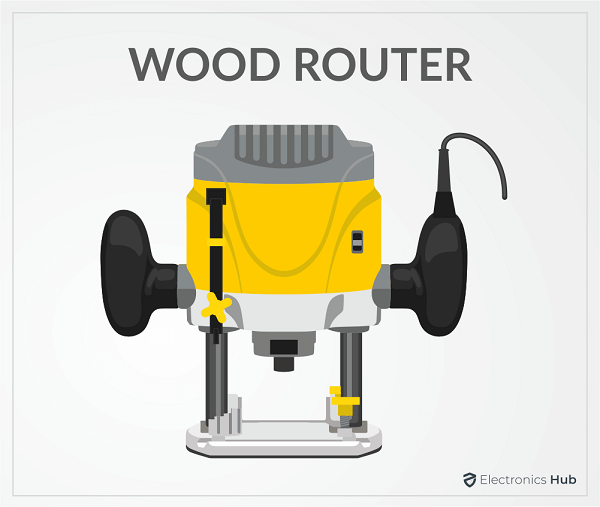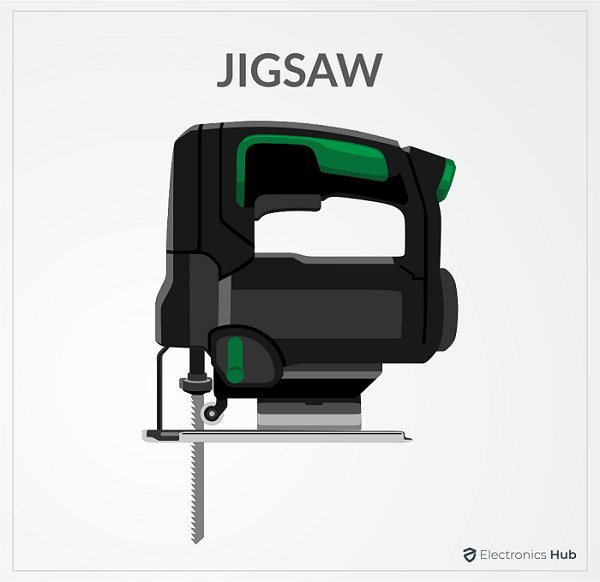Choosing between a router and a jigsaw depends on the specific needs of your woodworking projects. Routers are powerful tools best used for creating smooth, precise cuts, grooves, and edges in wood, often used for decorative molding, cabinetry, and intricate wood patterns. They excel in tasks that require fine detail and a professional finish, making them indispensable in a woodshop for finishing touches and creative work.
On the other hand, jigsaws are more versatile in cutting various shapes and curves quickly and efficiently, working well with multiple materials beyond just wood, like metal and plastic. If your projects involve a lot of intricate shape cutting and you need the flexibility to handle different materials, a jigsaw is your go-to tool.
Ultimately, the choice between a router and a jigsaw should be guided by whether you need to perform detailed carving and shaping (router) or are looking to cut intricate patterns across various materials (jigsaw).
Outline
ToggleWhat Is a Wood Router?
A wood router lets you use it for routing parts of hard materials including wood and plastic. It can be ideal for creating integrated designs by shaping wood edges and creating joints. You can use a router for making cabinetry. The unique power tool features a rotating cutting bit and has a flat base.
It can also come as a hand tool or as a router table. By employing bits rather than blades, they are classified into primitive and electric routers. Primitive routers come in the form of a hand tool that features a sharp blade and has a base along with chiseling wood. An electric router operates with an electric motor that can create a hollow path.
Pros and Cons Of Wood Router
Here are the benefits and drawbacks of wood router that you should be aware of.
Pros
- Ability to make a clean cut compared to a jigsaw.
- It can make sharper turns.
- Perfect for different types of cuts like rabbet, rounded, dovetail, and chamfer.
- Suitable for using as piloted bits.
- Perfect for crosscuts
- Allows making maximum passes.
Cons
- It is expensive.
- Requires a special bit for bevel cuts.
- Do not make a deep cut.
- Tough to set up and change bits.
- Dangerous to deal with compared to a jigsaw.
- It can char wood.
How Does Wood Router Operate?
The versatile design of a wood router lets you use it for different purposes. Whether it is making perfect edges or shaping stylish molding, you will be able to achieve both. It is also used for easy dadoes cutting and carving out clean rabbets. The tool lets you hollow out the area or rout out the area on different types of materials.
It is a versatile tool and features a narrow blade with a broad base. A modern router comes with an electric motor. This helps to drive the spindle which can spin rapidly. There is also a flat plane that has a rotating shaft. When you power on the motor, it will power on the shaft which helps to cause the spin.
Also check -
What Is a Jigsaw?
Equipped with a reciprocating blade, a jigsaw lets you use it for cutting purposes. With it, you will be able to make both straight and curved lines into different types of materials including wood and metal. It serves ideal for different types of woodworking jects as well as DIY purposes.
You can use a jigsaw for cutting materials into different shapes. By utilizing a thin blade, the special type of saw makes sure there will be perfect results. You can even use it for making miter joints due to the bevel function. It is available in the form of a handheld power tool and is powered by an electric motor.
Pros and Cons Of Jigsaw
Here are the benefits and drawbacks of jigsaw that you should be aware of.
Pros
- It is less expensive than a wood router.
- Ability to make deeper cuts.
- Easy to set up cuts.
- Safe in comparison to a wood router.
- Allows changing the blade conveniently.
- The thin blade does not remove extra wood.
- Adjustable blade for bevel cuts.
Cons
- It can make a rougher cut.
- Unsuitable for crisscross cuts
- Can make limited cuts.
How Does Jigsaw Operate?
A jigsaw has a U-shank or a T-shank blade. For professional purposes, a T-shank blade serves great. However, it is the teeth design that has to be considered carefully when buying jigsaw blades. For easy and clean cuts, it is important to consider the tooth shape, cutting angle, and spacing. It can have a high carbon steel blade, high speed steel blade, bi-metal blade, or tungsten carbide blade. You can find models that can come with variable speed controls to use according to your needs.
In a jigsaw, you will find a motor that drives the blade in an up and down motion. It creates a reciprocating motion that is very similar to a sewing machine. The motor is connected to the blade with irregular gears that have axes. The gear will convert the rotary motion by a reciprocating vertical movement that makes the blade move up and down. It usually cuts in an upstroke as the teeth point upwards. While using, the base is placed against the workpiece which makes the blade cut up through the material.
Router vs Jigsaw: What Are The Main Differences?
- Cutting Tool:One of the major differences between a router and a jigsaw is the cutting performance. In a router, you will find a rotating bit. A jigsaw comes with a reciprocating blade which makes it completely different than a router. You can use a jigsaw for sawing different types of materials as it is ideal for making straight and curved cuts. A router on the other hand is not a saw. It is used for making rounded edges.
- Depth of Cut:Even though a wood router lets you adjust the cutting depth through the router bit protrusion, it comes with a limited cutting flute. While cutting a thick wood plank, you will have to go for multiple passes. Jigsaws come with a long blade that makes them ideal for thick wood boards. You can easily use the tool for making deep cuts. This makes a jigsaw more versatile than a wood router.
- Cutting Circles:As a wood router is suitable for creating integrated designs, you can easily use it for cutting circles. It lets you create joints and shape edges with the rotating bits. When it comes to a jigsaw, you can make different types of cuts. However, it is not perfect for cutting circles. You can use a jigsaw for starting a circular cut and switch to a router for having a complete look.
- Type of Cuts:As both tools are for different purposes, you will have to note that they can make different types of cuts. A wood router can cut wood conveniently and it lets you create different types of shapes. However, compared to a jigsaw the depth of cut is not that high. A jigsaw on the other hand provides better control while cutting.
- Set-Up:Setting up a jigsaw is relatively easier than a router. By just drawing a line, you can follow it. It lets you cut most types of woods to have precision cutting. A router requires a separate guide. The design of the router makes it difficult for getting along lines. You will have to use the guide to keep the device on track.
- Changing Out Blades and Bits:Changing the bit of a router can be challenging. You will first have to lock the bit and loosen it. Following that, you will have to remove the bit and insert a new one. Again you will have to double-check if there is a firm grip. Changing a jigsaw blade requires a screwdriver or an Allen wrench for loosening it and removing the blade.
- Easier to Use:Compared to a wood router, a jigsaw is easy to use. By utilizing a marker or a pencil, you can make a fine line and make straight cuts. It is accompanied by a special base that helps to make easier cuts. Router cuts are difficult to make. The rounded bits can spin at high speed which makes them difficult to follow. If you are a beginner, a router is not the perfect choice for you.
- Safety:While dealing with power tools, you must be very careful. Always wear safety gear as you will have to protect yourself. In a jigsaw, you will find a reciprocating blade that can be more dangerous. A router on the other hand comes with bits that can make over 24000 RPM as well as loud noise. In both cases, you need to make sure that you deal with them carefully while working.
Conclusion
As it turns out that both a jigsaw and a wood router are two different tools, they both have their own functionality. For a professional woodworker, both tools are very important. With the jigsaw, you will be able to cut through the wood and a router is perfect for making shapes. When choosing the one from the two, it completely boils down to the type of project you are dealing with. Again professionally, both seem to be very useful.



